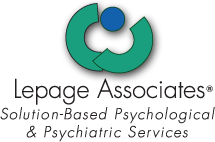Question: We brought home a puppy a couple of months ago, and I feel like my children are torturing the poor thing! That might be a bit of an overstatement; they really are just trying to play with the dog but can be too rough or too insistent. They adore their new pet, but they clearly do not know how to treat the dog properly. What suggestions do you have for teaching children to interact with dogs? My children are ages 4 and 7.
_____________________________________________________________________________________________
Answer: Puppies and children both need a lot of attention and care! The best way to have a happy life with a dog as part of your family is to take the time to make sure he’s well trained. This helps you, your children, and the dog. Your children, at ages 4 and 7, are not too young to understand this and will play an important role in training the dog to be a good family member. Especially if they already love their puppy, it shouldn’t be too difficult to get them involved in the process. It’s important for them to know how to interact with the puppy in such a way that will cultivate control and cooperation in the puppy as he grows. They can participate in fun games to train the dogs, which will also give them some needed guidelines for interacting with the dog. The children should not be left unsupervised with the puppy because all interactions between them are teaching the puppy something, but not necessarily what you want him to learn. Your children won’t learn how to treat the puppy well by verbal guidance alone. They need supervised experiences interacting with the puppy that show them how to be good dog owners. Including your children in the training process is the best way to teach them to interact with dogs because it provides structure, guidance, education about the puppy, and the real life experiences they need to help them learn.
Just like children, puppies need structure, routine, and to know their limits. It’s also important for puppies to know where they stand in the family. Dogs are pack animals and need to know their place in the pack. In a family, the children come before the dog. This can be established in various ways but should be done intentionally and with a lot of guidance from adults. It’s important that what the puppy learns from your children is part of the overall goals for teaching him to be a good member of your pack. Both the children and the puppy need lots of positive experiences to feel successful and happy.
On the emotional side, children are typically very good at identifying how a puppy might be feeling if you can take the time to sit down with them and calmly talk about it. You can ask them in a curious way, not an accusatory way, to imagine how they would feel if they were the puppy and someone pulled their tail or lifted their ears up, or teased them, or played with them too roughly…or whatever you see the children doing to the puppy. Talking about this calmly with your children helps them learn to be compassionate not just with animals but with people as well, including themselves! When you’ve opened a discussion such as this with them, it might also be a good time to do talk about what puppies need in order to feel happy. They can be a part of providing that to the puppy. Children can and should be included in caring for and training the puppy. There are plenty of websites that offer specific training techniques, games to play with puppies and children, and why puppies and dogs behave the way they do. There are also lots of obedience training courses in the area that would be fun for the children to participate in, although before registering it’s a good idea to check with the trainer as to whether children are welcome in the class. Good luck and have fun with your puppy!
